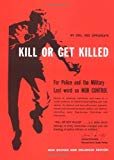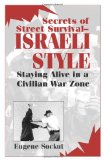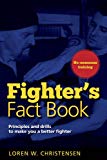Bruce Lee’s Speed Training
by Bruce Lee and M. Uyehara
What is speed in fighting? Is it the velocity of your hands, feet and body movement? Or are there other, prevalent essentials in a good fighter? What is a good fighter?
A good fighter is one who can hit his opponent quicker, harder, without much perceptible effort, and yet avoid being hit. He doesn’t only possess a pair of fast hands and feet and quick body movement, but he has other qualities such as non-telegraphic moves, good coordination, perfect balance and keen awareness. Although some people are endowed with a few of these qualities, most of these attributes are developed through hard training.
All the strength or power you have developed from your training is wasted if you are slow and can’t make contact. Power and speed go hand-in-hand. A fighter needs both to be successful.
One immediate way to increase your speed at impact is to “snap” or “whip” your hand just before contact. It is the same principle as the overhand throw. For example, if you throw a baseball with a full swing and snap your wrist at the last moment or the tail end of your swing, the ball will have more velocity than without the snap. Naturally, the longer swing with a snap will have more acceleration at the end than a shorter swing with a snap.
Speed in Punching
The backfist is not the quickest or strongest technique because you can’t utilize your entire body in the movement. It is, however, one blow that you can apply the whipping or snapping motion to.
The backfist is usually thrown at your opponent’s head, and it is used heavily in combination with lop sao (grabbing -the-hand techniques). It is delivered from shoulder height but can also be used as a surprise attack and can be launched anywhere from your waist to your shoulder. It is very difficult to block once you have acquired non-telegraphic moves.
Although some power is lost in this punch, it is compensated for or redeemed when combined with lop sao. If you can develop a strong pulling power in your arm, you will be able to jerk your opponent forward and apply the backfist. The impact should be devastating.
Candle Drill
To develop speed or quickness in the backfist, light a candle and attempt to extinguish it with the acceleration of your punch.
Blocking Drill
Another interesting exercise is to have a partner attempt to block your punch as you throw it at his face. If he misses his block, you should be able to stop your punch about 1/4-inch from his skin.
Finger Jab
The leading finger jab is the fastest attacking weapon available to you. It is fast because it travels only a short distance. It is also the longest hand weapon accessible to you. Since you do not clench your fist, you add several more inches to your reach.
To protect your fingers while throwing this technique, make sure you use the proper hand form. Align the tip of your hand by slightly bending the longer fingers to adjust to the shorter fingers and tuck your thumb in. Your hand should resemble a spear.
To develop speed in the finger jab, you need a great deal of practice and initiative. Speed relies on economy of motion, and the jab is one technique you have the opportunity to experiment with. The jab, like all jeet kune do blows, must be thrust forward without any retracting motion. It is like a snake darting at its prey without warning.
Paper Drill
The more hours you spend speed hitting, the faster your hands will travel. One excellent training device for this is the paper target. It is inexpensive, easy to construct and valuable
Leading Straight
The leading straight is the fastest of all the punches. Not only is it the main offensive weapon, but it’s also an important defensive tool.
And it is a “speed” punch. Like the finger jab, the leading straight travels only a short distance to the target because the hand is already extended.
The leading straight is also the most accurate technique because it is delivered straight forward at a close distance, and your balance is left intact. Like the finger jab, it is hard to block, especially if you keep it in a continuous, small motion.
You can put some “zip” into your punch by snapping it just before impact. Keep your hand loose and tighten your fist only an instant before contact. To put explosiveness in the blow, utilize the flowing-energy concept by adding heaviness to your hand.
The leading straight is not an end, but a means to an end. It is not a powerful blow that will knock your opponent flat with one punch. It is, however, the most dominating jeet kune do punch and is used profusely with the other combination punches and kicks.
The straight punch should be delivered from an on-guard position with the point of contact in line with the surface of your shoulder. Against a short opponent, bend your knees so your shoulders are aligned with the point of contact. Likewise, if your opponent is tall, stand on the balls of your feet.
Later, as you progress, you can throw the straight punch with your hands in any position. But the punch must be launched with your body in balance to be effective.
Unlike the classical stance, your hand is never placed on your hip, nor is the punch initiated from there. It is impractical to have your hand traveling the extra, needless distance. Furthermore, delivery of your punch from the hip exposes a large area of your body.
The leading straight will have more sting if you pivot your hips and utilize all the other functions for a heavy blow. But sometimes this will telegraph your movement, and you have to decide whether to sacrifice speed for power. This depends on your opponent. If he is very slow and awkward, you can utilize the powerful blows. But if he is fast, you may have to concentrate on speed more than power.
Speed Bag
Among the best equipment to develop speed and accuracy is the old -fashioned speed bag. To use the bag properly, you have to be quick with your hands. You also have to hit the target perfectly so the bag will bounce directly back to you.
In the beginning, use both hands to punch the bag and stand with your feet parallel but comfortably apart. Hit the bag straight, using your nose as the guiding point. The most valuable feature of the bag is that it compels you to hit directly and crisply so it returns to you sharply.
You cannot hit the bag if you punch from your hip; it takes too long to react. And you are liable to be hit in the face since your hands will not be able to protect your head from the oncoming bag.
Punching Pads
You can use punching pads to increase your speed and heavy punching.
If you are working out with one pad, have your partner hold the pad in front of him. Whenever you try to punch it, he should jerk it swiftly either upward or downward, trying to make you miss.
You can do the same exercise with two pads.
Wooden Dummy
The wooden dummy can also be used to learn speed punching. The disadvantage, however, is that you can hurt your hands if you are not conditioned to hit solid objects. Slapping Game
An excellent child’s game that is fun and can be played with anyone is the “slapping” match. Extend your arm fully in front of you with your hand outstretched. Make sure your thumb is on the top and hold it vertically. When your partner swings his hand to slap yours, jerk your hand upward and toward you, trying to avoid contact. You let him do the slapping until he misses, then reverse roles.
Non-telegraphic Punch
Jeet kune do features the non-telegraphic principles of fencing, and this sets the style distinctively apart from the classical styles of hung fu and boxing. For example, jeet kune do utilizes their footwork and the principle of thrusting your hand before your body, which makes it almost impossible to parry or block speed punches such as the backfist, jab or lead punch.
The idea of non-telegraphing is to initiate your punch without any forewarning (tensing your shoulders or moving your feet or body) so your opponent does not have enough time to react. If you punch with jut a slight motion of your feet or body, you have “telegraphed” or warned your opponent of your intention.
The secret is to relax your body and arms but keep them slightly weaving. Whip your hand out loosely so your shoulders don’t become tense, and clench your hand an instant before contact. And keep a poker face. You don’t want to telegraph your intentions.



